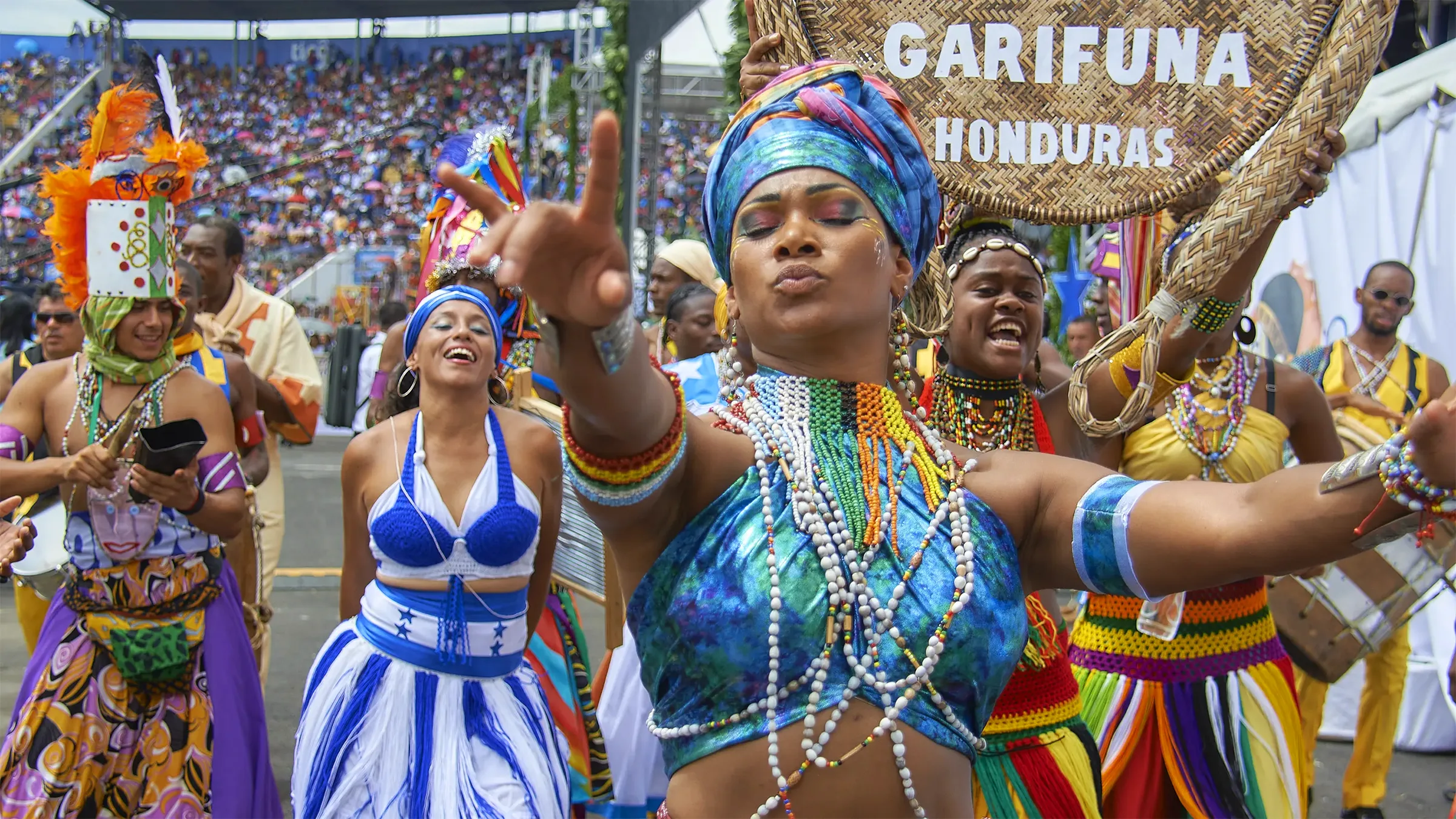The Garifuna ethnic group in Honduras

The Garífuna population lives on the Atlantic Coast of the country, from Masca, department of Cortés, to the department of Gracias a Dios.
The Garinagu are descended from the Carib, Arawaka and black African peoples, who came to the island escaping from slavery.
According to oral tradition, they are descendants of the Efik, Ibo, Fons, Ashanti, Yoruba and Congo African ethnic groups, kidnapped from the coastal regions of West Africa (corresponding to the modern states of Ivory Coast, Ghana, Nigeria, Cameroon and Congo) by Spanish and Portuguese slave ships.
It is also known that in the seventeenth century, more than one of these vessels was shipwrecked off Yurumain Island (San Vicente), where the slaves took refuge, gradually crossing with the native Carib Indians, thus emerging, the Garífuna people.

Table of Contents
Origin
According to historical sources, in 1655 two Spanish ships carrying slaves from Africa were shipwrecked off the coast of San Vicente Island. Shipwrecked Africans took refuge in the mountainous terrain of the island.
The African newcomers coexisted with the insular Caribs to whose society they partially integrated participating, even in their war raids.
Many of the Africans, adopted the local way of life, took Caribbean women for wives and established their own families.
Some of the African customs were preserved and mixed with the Caribbean customs. As a product of this union, a new population arose, which began to compete for land and power with the Caribs.
How did they arrive
In April 1797, the Garífuna were expelled from San Vicente and driven in a British naval convoy to the island of Roatán.
Although the English left them with supplies of mouths, utensils, hooks and lines, cuttings and seeds, it must have been difficult for them to clear the land and sow before the rainy season began (the rainy season then began between the last week April and the first of May), weak and demoralized by the long journey, the Garifuna asked the Spaniards to transfer them to the mainland, a request that was answered on May 19, 1797.
Then they settled in Trujillo. Shortly after arriving in Trujillo, some men explored the coast in the direction of Belize and towards Nicaragua.
The campeche tree (or palo de tinte) and mahogany were the main export items. The English, dedicated to cutting wood, liked to give work to the Garífunas who ventured through Belize.
Garifuna culture
Their form of production (fallow and the rotation of cultures), has allowed them to live in harmony with the land and its resources, thanks to their social organization where women play a preponderant role in agricultural and cultural activities.
Likewise, many women contribute significantly to the family income by dedicating a good part of their time to the preparation and sale of cassava, bread and coconut oil. Historically, in the Garífuna social organization, the figure of a Chief and Council of Elders stands out.
In addition to traditional occupations such as agriculture and fishing, they have a wide variety of foods and beverages rich in protein, vitamins and calories such as tatau (Garifuna covered with a variety of tubers and seafood in coconut soup), areba or casabe (tortilla large baked yucca), the hudutu (machuca).
Among the drinks are Hin, a kind of beer made from cassava, marmara, a drink made from fermented corn, sugar cane broth and guifiti, among others. Regarding the song, dance and rites, the most important and significant manifestation is the rite called Daga, dedicated to the dead where the abaimahani is sung by the women and the tip, a fertility rite dedicated to the reproduction of the people. Chugú is also a ritual to the spirits.
In relation to singing, dancing and rituals, the situation is the same; Among these cultural elements we can mention the Digui, which is a rite dedicated to the dead, between song and arumahani, sung by men, the latter are interpreted in prayers to the dead; there is also the tip, a dance dedicated to the reproduction of the town, the Sanvey and the Vanarogua.
The Garífuna organization
June 5 (5), 1977, marks the beginning of the organizational development of this ethnic group, which went through several stages, including the Honduran Garífuna Society SOGANAH) and others that were later dissolved for different reasons, finally forming what today it is known as the Black Fraternal Organization of Honduras (OFRANEH).
What’s more
- Get to know the Ethnicities and Indigenous Groups of Honduras
- Map of Ethnicities and Indigenous Groups in Honduras



